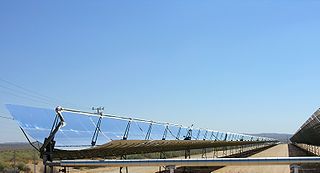Feasibility of Widespread Concentrated Solar Power

I had the plant construction cost at $600 million per square mile. I figured a few hundred billion more for infrastructure improvements like HVDC grid upgrades and storage. It seems the nationwide CSP solution is far less feasible that I understood.
What’s the breakdown of the LCOE for CSP – that’s fourteen cents a kWh now, correct? How is that number built?
What’s your view of the comparative standing of CSP when set alongside PV (utility scale and distributed) and Wind, considering the following?
– The greatest technically practical speed at which each of these technologies (or a combo) can be deployed
– Scarcity, regional disparity and/or geopolitical witholding, of necessary materials for PV, Wind, and CSP.
– Amortization, depreciation, repair and maintenance of the facilities and infrastructure.
– Vulnerability to extreme weather (tornados, large hail, etc.), sabotage, and altered climate factors.
– Soft environmental costs of facility/infrastructure production and operation.
– The instability of fossil fuel prices, and the inevitable rising cost of extraction
– ROI for private investment and suitability for efficient government subsidy (or direct government implementation)
– The anticipated relevance of recent efforts toward a drag & drop, plug & play distributed CSP solution.
There are three main varieties of CSP: Fresnel lens, parabolic trough, and tower. I really can’t answer most of your questions here, or, better put, I’d be guessing; it’s been a long time since I took dive into CSP.
I got the $0.14 figure from a representative of Abengoa this week at the Solar Power International show; they’re an enormous energy company and the world leader in CSP. Keep in mind that the relatively high cost has the (unfortunate) effect of causing very little of this stuff to be developed and built. It’s a kind of vicious cycle: high costs means low interest means an even greater cost advantage for PV and wind. It is valuable for islanded applications, so it is moving along.
Keep in mind that all this operates in a kind of “moving target” environment where we have efficiency, electric transportation, storage, smart grid, distributed and utility-scale PV, increasing penetration of wind, and other flavors of renewables—all adding value at significant, though fairly unpredictable rates.
You really should check out Amory Lovins’ presentation; I think he’s nailed it.

The biggest difference between solar thermal power on the one hand and PV and wind power on the other is that the former usually has integrated storage, or failing that, the ability to burn gas at night to keep the turbines turning. This results in the ability to dispatch power on demand, and to deliver power 24/7 if required.
Why is storage integrated into solar thermal power?
Primarily because at scale, integration of storage in the form of molten salts etc, has only a small marginal cost once you take into account the effect of improved turbine capacity factor on capital costs.
For a fair comparison between solar thermal and PV or wind, you would need to add enough storage to deliver around 8 full load hours. On this basis, recent developments in energy storage are putting the cost of PV + storage into the same ball park as solar thermal with storage.
I don’t know how future costs will develop, however in my view, there are three big levers for reducing the cost of solar thermal power.
1. Higher operating temperatures – steam turbines run more efficiently when the steam driving them is at higher temperatures and pressures. (This due to the Carnot equations).
https://protonsforbreakfast.wordpress.com/2012/02/15/heat-engines-and-water-wheels/
(Pushing temperatures from 300 to 500 centigrade will result in around 20% more electricity per collector area).
2. Lower cost materials – curved glass tends to be expensive and heavy necessitating stronger heavier support structures. New materials and approaches may allow lighter less expensive collectors and lower cost, more easily transported structures.
3. Learning curve – simply doing a thing repeatedly generates efficiencies as the basic tooling, R & D, and skills are broadly acquired during the first few installs and don’t have to be paid for again subsequently. Also there are inevitable small but accumulating iterative improvements to designing, manufacturing, planning, and deploying each subsequent project so that each is a little more efficient than the last.